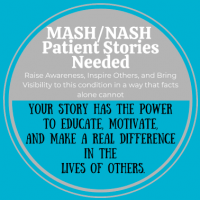The U.S. Medicaid program has taken a pioneering step to ensure that new gene therapies for sickle cell disease (SCD) are accessible to the millions of Americans who rely on public health insurance, as was reported by BioPharma Dive. On July 25, 2024, the Centers for Medicare & Medicaid Services (CMS) announced the launch of an experimental payment model, called the Cell and Gene Therapy Access Model, specifically designed to address the high costs and logistical challenges of gene therapies targeting SCD.
Sickle cell disease is a debilitating inherited blood disorder that disproportionately affects Black Americans. While recent scientific advances have produced two gene therapies (bluebird bio’s Lyfgenia and Vertex Pharmaceuticals/CRISPR Therapeutics’ Casgevy), these treatments come with multimillion-dollar price tags, placing them out of reach for many patients and for state Medicaid budgets.
The new Medicaid initiative seeks to solve this access barrier by centralizing negotiations and simplifying payment arrangements. Under the model, CMS will negotiate outcomes-based agreements directly with drug manufacturers on behalf of all state Medicaid agencies. This means Medicaid programs across the country can benefit from a single, standardized contract that ties payment to patient outcomes, such as the reduction of sickle cell crises or hospitalizations. The model is voluntary; states can choose whether or not to participate.
A crucial aspect of the plan is its focus on reducing administrative burdens. By streamlining processes and providing technical assistance to states, CMS hopes to encourage broader adoption, helping more eligible patients gain timely access to these transformative therapies. Additionally, the program will monitor real-world effectiveness and collect data, aiming to inform future policy decisions for similar high-cost, one-time treatments.
The significance of this payment model extends beyond SCD, as it could set a precedent for how Medicaid handles future gene therapies for other rare or chronic conditions. Rather than each state independently negotiating complex agreements, CMS’s centralized approach could become a template, potentially leading to more equitable and efficient access to cutting-edge treatments nationwide.
The announcement has been met with cautious optimism from both patient advocates and the pharmaceutical industry. Advocates highlight the urgent need to address disparities in access to new therapies, given that Medicaid insures about half of all Americans with SCD. Drugmakers, for their part, have signaled a willingness to engage with CMS, recognizing that Medicaid represents a significant portion of the potential market for these treatments.









